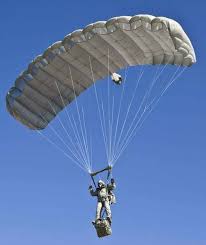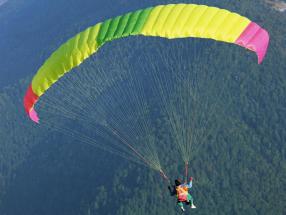U-Turn Physics under the Dome (part 2)
 You should begin training in high-speed landing by approaching in a straight line with acceleration by two front free ends, which must be pulled up by 10-12 cm.This approach will be similar to the standard one, except that the front free ends must be smoothly started to release at a height of several feet ( 1 foot = 0.309 m) above the one on which you usually begin to perform a “pillow”. The “pillow” itself runs smoothly and slowly. Continue reading
You should begin training in high-speed landing by approaching in a straight line with acceleration by two front free ends, which must be pulled up by 10-12 cm.This approach will be similar to the standard one, except that the front free ends must be smoothly started to release at a height of several feet ( 1 foot = 0.309 m) above the one on which you usually begin to perform a “pillow”. The “pillow” itself runs smoothly and slowly. Continue reading
U-Turn Physics under the Dome (part 1)
 I hope that my comments above will help the reader to understand what happens during the U-turn. In short, both types of U-turns lead to an increase in vertical and horizontal speed, however, for a planned maneuver, U-turns using the front free ends are generally preferable as leaving more “backlash” in case of calculation errors or sudden changes in the situation. Unfortunately, most of the unplanned, “panic” U-turns are made by just the brakes, which led to a considerable number of accidents. Continue reading
I hope that my comments above will help the reader to understand what happens during the U-turn. In short, both types of U-turns lead to an increase in vertical and horizontal speed, however, for a planned maneuver, U-turns using the front free ends are generally preferable as leaving more “backlash” in case of calculation errors or sudden changes in the situation. Unfortunately, most of the unplanned, “panic” U-turns are made by just the brakes, which led to a considerable number of accidents. Continue reading
Beginner Tips – Low U-Turn (part 3)
 Acceleration using the front free ends has a number of important advantages compared to turning the brakes. Acceleration with the help of the front free ends accelerates the dome, and a turn with brakes, on the contrary, slows it down. This difference is especially apparent at the end of a reversal. After a turn on the front, the dome slows down to its normal speed and tends to return to a neutral position above the pilot. Continue reading
Acceleration using the front free ends has a number of important advantages compared to turning the brakes. Acceleration with the help of the front free ends accelerates the dome, and a turn with brakes, on the contrary, slows it down. This difference is especially apparent at the end of a reversal. After a turn on the front, the dome slows down to its normal speed and tends to return to a neutral position above the pilot. Continue reading
Beginner Tips – Low U-Turn (part 2)
 Now consider the pitch angle of the dome, which is often confused with the angle of attack. This is the pitch angle that is set by mutually adjusting the length of the lines. The canopy pilot can also change it in flight by pulling the front or rear free ends of the suspension system. Pulling the front free ends changes this pitch angle, but not the angle of attack. With a larger negative pitch angle, the dome will gain a greater vertical speed, but the direction of the relative flow remains practically unchanged, with the exception of the moments when this maneuver begins and leaves it. Continue reading
Now consider the pitch angle of the dome, which is often confused with the angle of attack. This is the pitch angle that is set by mutually adjusting the length of the lines. The canopy pilot can also change it in flight by pulling the front or rear free ends of the suspension system. Pulling the front free ends changes this pitch angle, but not the angle of attack. With a larger negative pitch angle, the dome will gain a greater vertical speed, but the direction of the relative flow remains practically unchanged, with the exception of the moments when this maneuver begins and leaves it. Continue reading
Beginner Tips – Low U-Turn (part 1)
 Starting from the very first jumps, skydivers are taught that a low U-turn is one of the main causes of parachuting accidents. When turning, the vertical speed increases, and when exiting it, it goes into horizontal. One must be very careful in controlling the energy of the U-turn in order to avoid a collision with the ground. It doesn’t matter if the U-turn was the result of improvisation or a pre-planned maneuver, if contact with the surface occurs before the dome returns to normal, it can cause serious injury or death. Continue reading
Starting from the very first jumps, skydivers are taught that a low U-turn is one of the main causes of parachuting accidents. When turning, the vertical speed increases, and when exiting it, it goes into horizontal. One must be very careful in controlling the energy of the U-turn in order to avoid a collision with the ground. It doesn’t matter if the U-turn was the result of improvisation or a pre-planned maneuver, if contact with the surface occurs before the dome returns to normal, it can cause serious injury or death. Continue reading



